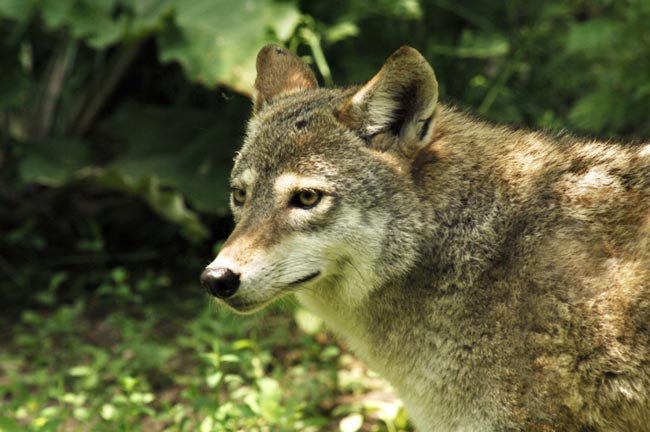Coyotes Cower in Wolf Territory

Who’s afraid of the big, bad wolf? Coyotes.
While coyotes are top wildlife predators in many parts of the country, they seem to be wary of their Canis cousin, the wolf, with coyote densities dropping by a third in wolf territory, a new study finds.
The research, detailed online by the Journal of Animal Ecology, examined the effects of wolves on coyote populations in Grand Teton National Park and the southern greater Yellowstone ecosystem.
Researchers followed radio-collared coyotes and found that while there are always more coyotes than wolves, there were fewer coyotes in the places where the two species overlapped.
Coyote densities were 33 percent lower in the areas they shared with wolves in Grand Teton and 39 percent lower in the areas of Yellowstone where wolves were recently reintroduced.
About 16 percent of radio-collared coyotes were preyed upon by wolves, the study found.
Relative safety came only in numbers as coyotes without packs were more likely to become the wolves' dinner. Lone coyotes were also much more likely to leave an area inhabited by wolves than coyotes living in packs.
Get the world’s most fascinating discoveries delivered straight to your inbox.
“The study tests the hitherto unproven hypothesis that wolves limit the range and numbers of coyotes in places where the two species compete with one another,” said study leader Kim Murray Berger, a Wildlife Conservation Society researcher. “In this instance, the findings do support the theory, but coyotes can hold their own against wolves by living in packs.”
Humans are actually a bigger threat to coyotes than wolves, with 29 percent of the coyote mortality in the study attributable to human activities.
- Top 10 Deadliest Animals
- Vote Now: Top 10 Most Destructive Creatures
- Gray Wolves to Leave Endangered List
 Live Science Plus
Live Science Plus






